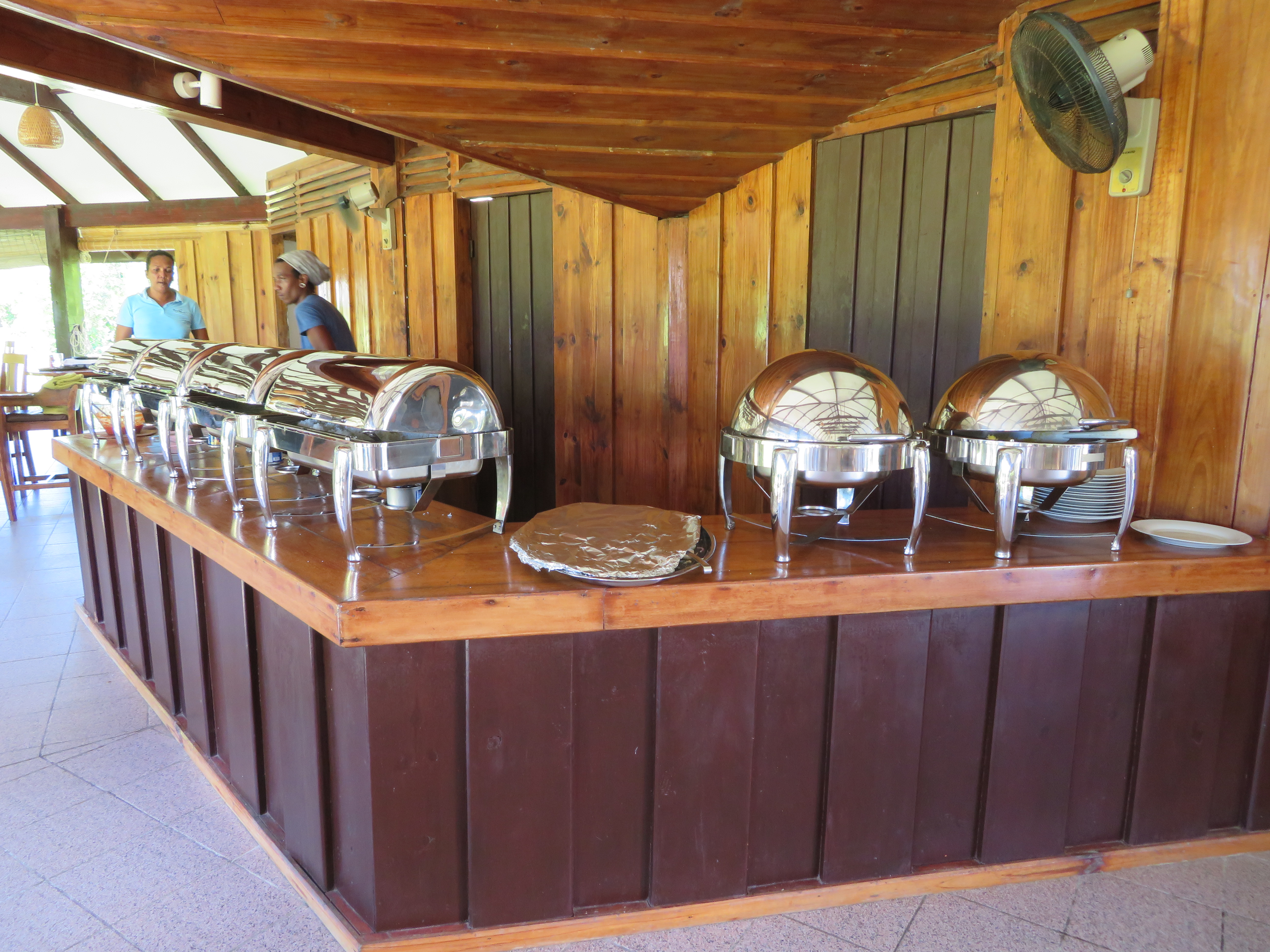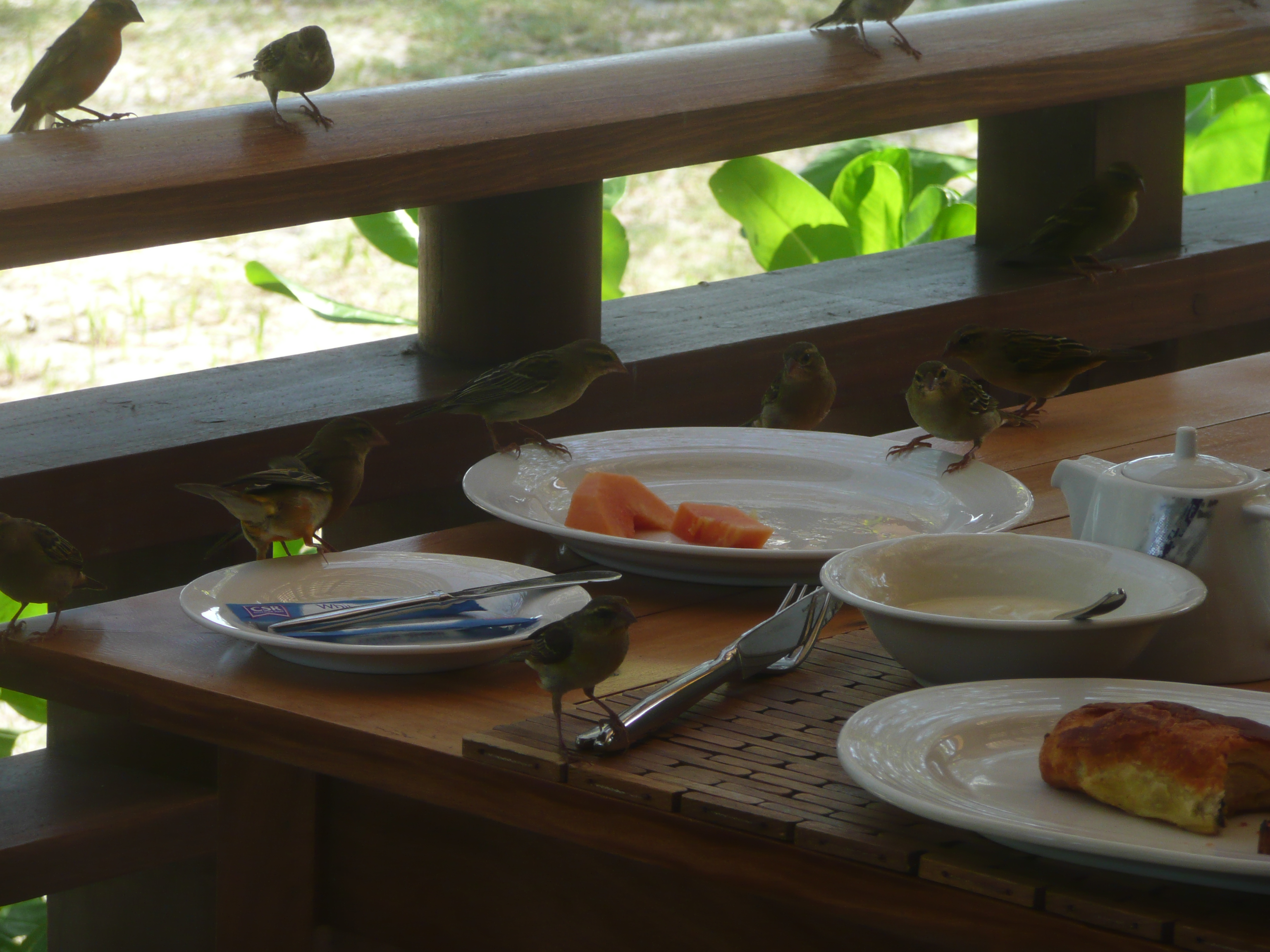
In Seychelles (and doubtless elsewhere) hotels, ranging from small guest houses to huge five-star buildings catering for those who want luxury, have been built in areas with bird populations that form part of the attraction for many of the guests. In warmer climes, the restaurants associated with the hotels are open plan, often with outside tables for those who like the outside eating experience.
Many bird species have catholic tastes and are attracted to such restaurants as these facilities provide them with food that is readily available at predictable times of day. Some guests like the experience of birds, often colourful and of cheeky disposition, visiting their tables; many such guests cannot resist the temptation of offering the birds food items. Other guests can be frightened of birds in such close proximity. And soon after feeding, birds have to defaecate and are not particular where they deposit their droppings. Where this is on tables, plates, serving areas or other food handling areas, the potential risk of disease transmission emerges.

As a result, many guests and hotel managers strive to deter birds from utilising their facilities. In Seychelles a commonly applied attempt to achieve this has been to provide local birds with an abundant supply of food prior to the opening times of the restaurants. The logic is that by the time guests arrive for their meals, the birds will have full stomachs and will not be tempted by the food intended for tourists. In reality, this tactic has simply supplied the birds with even more food and led to huge increases in their populations. This happened on Bird Island, Seychelles, in the 1990s, when bird tables were erected on grassland in front of the restaurant, and the tables were loaded with rice before breakfast and lunch times. This small island’s populations of Madagascar Fodies, Barred Ground Doves, Madagascar Turtle Doves and Common Mynas (all bird species that have been introduced to Seychelles) exploded and birds continued to exploit food on tables and at the servery. The bird tables were eventually removed and in time the bird populations declined to former levels, but of course continued to visit the restaurant.
At another hotel in Seychelles where birds took advantage of the al fresco facilities, guests were encouraged not to feed the birds in a letter from management. The letter highlighted in particular the potential harm to the birds, saying that feeding them with bread would make them obese. Observant tourists, arriving early for their meals, could hardly have avoided seeing the scattering of large quantities of bread on the ground adjacent to the restaurant by the restaurant manager, and the large number of birds that had assembled in the nearby bushes waiting for their twice-daily feeding bonanza. And the birds were very healthy and not obese!
We have long been arguing that providing additional food, any form of scaring, and even killing of birds will not prevent them from entering food premises as long as food remains readily available to birds at the restaurants. Reducing access to food is the only long-term solution, requiring barriers to prevent bird entry, changes in food presentation methodology, and ensuring the all waste food is removed (such as on plates after guests have departed) and placed out of reach of birds.
Bird Island has now achieved this through the introduction of food containers that guests have to open to access their meal, and while most guests remember to close the containers after serving themselves, hotel staff keep a watchful eye and close any that are left open. Hotel staff are also vigilant at the tables, where as soon as a guest has finished eating, crockery and cutlery are removed and when the table is vacated it is immediately cleared. Furthermore, used crockery and cutlery are taken for washing in a bird-proof room adjacent to the restaurant. The result: birds now infrequently enter the restaurant and populations of the species that formerly posed problems are now much reduced in the vicinity.
The problem of birds entering restaurants in warm climates is widespread because omnivorous species that associate with human dwellings are often adaptable and unwary when abundant and easily accessible sources of food are presented to them. This should be recognised, and addressed, at the design stage of new facilities and when refurbishing existing ones. Bird-proofing of existing buildings is expensive, often difficult, inconvenient and unsightly. Bird scaring is rarely effective in deterring them from feeding. Killing birds to resolve preventable problems is similarly unlikely to offer a lasting solution and is unacceptable in many peoples’ views. It is high time that planners and architects anticipated and accounted for this predictable feeding behaviour of birds and build in preventive measures before problems arise.